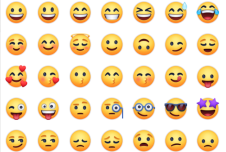Social media use can be harmful. The effects are troubling and well-documented, from tragic stories of adolescent life lost to academic research on the psychological harm such platforms can cause, including anxiety, depression, and low self-esteem.

Yet with 59% of the whole world using social media, for an average of two and a half hours per day, according to a 2022 Broadband search, it has also become inextricable from the daily lives and livelihoods of many. It is not sufficient to say social media is bad, don’t use it. We need a more proactive approach. The question often missing from the discussion is: How can social media use be optimized to enhance our well-being and flourishing?
What is social media for?
To begin, let’s clarify what social media is, and what it is not. In a 2010 paper, European researchers Andreas Kaplan and Michael Haenlein define social media as “a group of Internet-based applications that . . . allow the creation and exchange of user-generated content,” in virtual communities. Social media includes platforms such as Facebook, LinkedIn, Twitter, Instagram, YouTube, TikTok, Snapchat, and Pinterest. Pure messaging services such as WhatsApp do not meet these criteria and are not considered to be social media. It is this within-platform content-creation functionality that makes social media a unique, and still relatively novel, form of human interaction.
Social media platforms have been designed with profits in mind, rather than users’ well-being. To optimize our use of social media, we need to understand the significant psychological and well-being factors at play online. Only then can we retain well-being and flourish, regardless of whether social media has been designed to prioritize it.
However, typical social media advice does not take a structured psychology-based approach to well-being. In the largest systematic review of positive social media usage outcomes to date, I trawled with colleagues through the research to see how social media use interacts with well-being. The upshot? It is possible to create a positive spiral in social media usage, where usage supports flourishing; but this requires intentionality and cannot be communicated in a few quick tips. This is because social media affects us all differently, depending on age, gender, personality, and many other factors.
I’d like to offer a roadmap for taking a proactive and tailored approach to social media engagement and well-being. We conducted our research across age brackets, countries, and other demographics, using a positive psychology lens. Whether you are an adult wishing to use social media as part of your career development, or an adolescent for whom social media is hard to opt out of, the aim of the recommendations below is to empower you in your social media use today, rather than wait for slow or uncertain policy change.
What does flourishing look like?
What does it look like to flourish online? Our research, drawing on established positive psychology flourishing frameworks, breaks it down into two broad domains.
- Social capital and social support. Is social media helping to support you when you’re stressed? Are you building reciprocal relationships with other individuals through your social networks, though both weak and strong ties? If you feel like the answers to those questions are yes, you’re on the right track toward flourishing online. Studies have found that this is completely possible: For example, German Neubaum and his colleagues found in a 2014 paper that social media produces short-term positive emotions and offers social support through rapid emotional relief after crises. Two larger systematic reviews, one focused on breast cancer patients and another examining general social support, found that social media can indeed provide real comfort and friendship.
- Identity. Identity is a broad concept encompassing multidimensional aspects that create one’s sense of self. In a 2020 study, Rebecca Pera and her colleagues find the “digital self” to be an increasingly important component of subjective well-being. That’s no surprise: The ability to generate multi-media content on social media, which Oxford University’s Bernie Hogan conceptualizes as an online “exhibition,” also opens up opportunities for self-presentation, self-expression, and identity development. When Judith Kasperiuniene and Vilma Zydziunaite systematically reviewed 17 studies of how professional identity is constructed through social media in a 2019 paper, they found a “spiral of transformation” as people proactively designed and shaped professional identities online—and then received feedback and support on these. This can enable career transition, carving our professional niches and relevant networks, and form a key part of our professional development.
- Mastery. It’s also worth mentioning the concept of “mastery,” which is core to various well-being frameworks. Mastery can comprise various subdomains—skills acquisition, learning, accomplishment, self-efficacy, and self-worth. This can happen in university settings, where social media offers peer support groups and learning environments, and organizations, where it can promote knowledge exchange and well-being. In their systematic review of social media use in medical education, Christine Cheston and her colleagues found learner engagement and active learning to be important benefits from social media-enabled interaction and learner-generated content.
Five ways to get those outcomes
What conditions will increase the likelihood of social support, healthy identity formation, and mastery? The research shows that conditions and outcomes are inextricably linked: The flourishing outcomes influence these same conditions, creating potential for a positive spiral. Our research has identified five key conditions as pivotal for achieving the flourishing outcomes.
1. Manage social comparison. By far the biggest determinant of online well-being is the extent to which social comparison occurs for the individual.
Social comparison is the process of thinking about other people in relationship to the self. This is amplified on social media due to the rapid, constant provision of information about others. While, in general, the findings suggest that more social comparison is worse for well-being, we find, upon closer inspection, that it can be successfully managed.
For example, the research highlights that different types of social comparison produce different well-being effects. There is a distinction between comparing one’s opinions against others (opinion-based comparison) versus comparing one’s abilities. Opinion-based comparison via social media can, in fact, improve well-being and feelings of optimism and inspiration, as Sun Young Park and Young Min Baek found in a 2018 study. Therefore, rather than simply saying, social comparison is bad, don’t compare, one might explore, and focus on, particular types of comparison.
Comparison can also be a positive stimulus: Some research suggests that the fear of missing out (FOMO) social comparison can actually encourage social connection. Likewise, benign envy—where the intention is not to damage the position of the superior other—can be a source of inspiration. Consequently, individuals might intentionally channel such comparison toward inspiring positive change.
Different people have different social comparison orientations—that is, they are prone to different amounts of comparison based on individual differences and circumstances. Being more intrinsically motivated, and clear on one’s own goals, can help reduce the impact of social comparison. Better offline well-being also reduces comparison, as does reducing the time spent online.
Lastly, proactive management of social comparison might be as simple as choosing sites which are less conducive to social comparison, such as Twitter, and being mindful when using platforms worst for comparison (e.g., LinkedIn).
2. Understand how social media affects our fundamental psychological needs. Self-determination theory identifies three psychological needs underpinning human motivation:
- Autonomy: a feeling of control with the absence of external pressures;
- Relatedness: connectedness with others; and
- Competence: the ability to act effectively and meaningfully.
Relatedness is generally positively associated with well-being from social media usage. Social media can also be used to compensate for low levels of relatedness or competence. For example, Facebook was found to support those who lacked the social skills required to develop social capital and confidence through conventional routes.
But while it might help us connect with others, social media simultaneously impinges our autonomy through its addictive design. This is highlighted by the mixed outcomes resulting from abstinence or reduction of social media consumption. There are diminishing returns from time spent on social media: In a 2019 study, Zahir Vally and Carline D’Souza find that full abstinence reduces well-being by severing social channels and increasing loneliness.
Meanwhile, Melissa G. Hunt and her colleagues, as well as Julia Brailovskaia and her colleagues, found that restricting social media usage improved future usage behaviors, improving autonomy and well-being significantly. Thus we recommend using social media intentionally for connection, but experimenting with levels of usage and periods of abstinence to regulate the tension between connection and autonomy.
In reality, limiting social media use can be hard! Mindfulness, that is, the self-regulation of attention on to the immediate experience, offers a key here. For those with greater levels of mindfulness, social media use can lower burnout at work and increase their sense of self-esteem and clarity about their identity. Over time, by building self-regulation and autonomy resources, we can get better at limiting our time online (and limit mindless scrolling), and therefore get the benefits of connection without the loss of personal autonomy.
3. Tailor social media approaches to individual differences, needs, and motivations. Individual differences are key in determining how individuals will be affected by social media.
Rather than binary outcomes suggesting social media is either good or bad for introverts or extraverts, findings are more nuanced, suggesting that social media can benefit both extraverts or introverts in different ways, and that personality impacts usage differentially.
For example, high-functioning introverts are better at being truly alone without resorting to social media, but at the same time, those with low social competence (or the socially anxious) might benefit from the connection opportunities afforded by social media. What does seem clear, though, is that people higher in neuroticism show more depressive symptoms online.
Other notable individual differences include age and gender. Older groups have a more intimate experience with social media and are less prone to negative comparison and anxiety. Males are found to experience greater well-being benefits from social media. Why? According to one study, women are more likely than men to link social comparison and body dissatisfaction. All this means that to be intentional online means taking individualized approaches based on demographics, traits, and preferences.
4. Acknowledge the influence of specific social media platforms and their characteristics. Social media platform design has created different environments, through what has been described as “choice architecture” designed to influence our behavior, as Amy Binns describes in a 2014 paper. Each platform has different features that are conducive to different levels of comparison and connection, while influencing user behavior, confidence, and experiences. As briefly touched upon above, LinkedIn was found to induce the most social comparison, and Twitter the least.
Different features produce different well-being effects. Research suggests loneliness decreases and happiness increases as a result of image-based social media use, whereas text-based Twitter is neutral. Other results suggest this is a result of the intimacy offered by image-based social media. Instagram’s fairly recent option for users to hide their “like” counts from others is a positive and significant step toward reducing “likes-based” comparison. Overall, pay attention to how different social media platforms make you feel, with the awareness that these feelings are not your “fault,” but rather a function of their design. Consider which features might contribute to this in your particular case, and adjust your usage accordingly.
5. Work on offline well-being to support positive outcomes. Much of the research highlights the bidirectional relationship between social media and well-being. That is, higher levels of general well-being translate to a better social media experience. This has the benefit of shifting the focus off social media, to key well-being dimensions, such as physical health and offline relationships. The more we can build our offline resources, including sense of identity, autonomy, and well-being, the less likely social media is to interfere with our well-being and the more chance we can benefit from its flourishing opportunities.
This article is not about whether social media is good or bad. Indeed, at any given point in time, we may “like” or dislike social media. Regardless of this preference or opinion, social media is increasingly embedded into the way business and social life operate today. Therefore if we are to use it, let’s be aware of its unique features and how these interact with our own psychological needs, individual characteristics, and well-being.








Comments